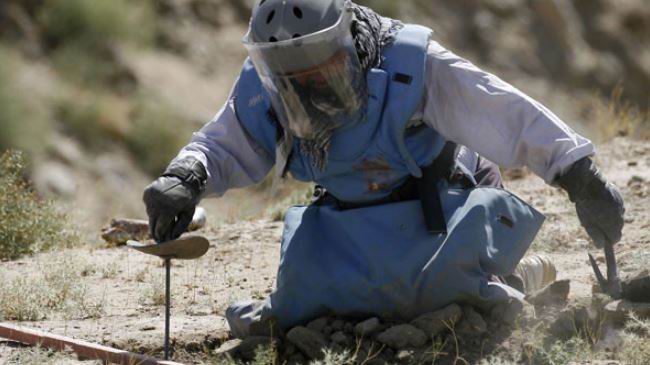KABUL (Khaama Press): The Danish Refugee Council recently announced that Afghanistan is recognized as one of the countries in the world with the highest landmine-affected areas. The pervasive presence of landmines in Afghanistan poses a significant humanitarian challenge, affecting the safety and livelihoods of the population.
This issue not only contributes to the displacement of communities but also underscores the urgent need for coordinated efforts to address the landmine threat and ensure the well-being of the Afghan people. International collaboration and support are crucial in mitigating the impact of landmines and fostering a safer environment for the residents of Afghanistan.
In its latest report, the Danish Refugee Council has highlighted that the lands in Afghanistan, where 70% of the population currently resides in rural areas, are heavily contaminated with landmines.
This is particularly concerning given that 80% of the Afghan population is directly or indirectly dependent on agriculture for their livelihoods. The prevalence of landmines not only poses a direct threat to the safety of the people but also significantly hinders the agricultural activities that form the backbone of the country’s economy.
Addressing this issue is imperative to ensure the well-being and sustainable livelihoods of the Afghan population, emphasizing the critical need for concerted efforts and international support to mitigate the impact of landmines in the region.
In the Danish Refugee Council’s report, it is stated that access to areas that were previously inaccessible has increased since August 2021.
This comes in contrast to the recent statement by the United Nations Office for the Coordination of Humanitarian Affairs (OCHA), which mentioned on the Ex network that since the commencement of demining operations in Afghanistan in 1988, mine action organizations have cleared over 13 million explosive remnants of war, nearly 764,000 anti-personnel mines, and 33,460 anti-vehicle mines.
Despite these efforts, the report underscores that the remnants of war, including landmines, continue to threaten the population, particularly those engaged in agriculture-based livelihoods such as farmers, shepherds, and livestock keepers. It is noteworthy that OCHA had previously highlighted the vulnerability of livelihoods dependent on agriculture, stating that families, including farmers, shepherds, and livestock keepers, are particularly at risk of dangers resulting from explosions.
Recent incidents of mine explosions in various provinces of the country, mainly affecting children, further emphasize the ongoing risks. In a recent case a few days ago, an explosion in a residential home in Nangarhar province resulted in injuries to three members of a family, highlighting the persisting threat of unexploded mines from past conflicts.







